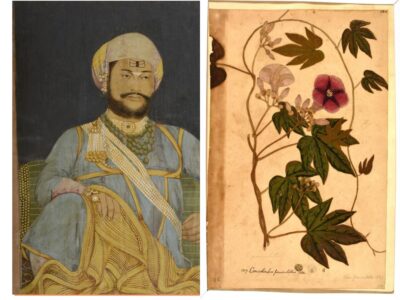Clearly one of the most prolific artists of the 50s, whose works span every medium and genre possible, a celebrated painter, whose works stand as a stark mirror to the times they were done. The living legend, Jogen Chowdhury, is an inspiration to generations of artists and art lovers. This interview is from early this year (2016) when he was in Hyderabad to attend a retrospective of his work – around 300 of them – that belong to his personal collection and a considerable number that belong to Prshant Lahoti (Owner of Kalakriti Art Gallery, Hyderabad) displayed at the gallery.

And no wonder that his art reflects his life troubled with the aftermath of partition, the hardships of refugee’s life and evidently his drawings of the human forms with its stark lines evoke a darker emotion. Be it a horse, an old woman or an impoverished man – all the sagging lines, the impoverished bodies and effortless line in black ink tell the story of life as seen through personal experiences and the world around him.

Jogenda’s watercolour recreating village life
The well-worked portraits of people in their many layers not just stand as an image, but uncannily reflect the mood and character of the person painted; and above all, the early works, seem like a promise for a great future of a restless artist.
Like Ravindranath Tagore, whom Jogenda refers to as the first modern artist of India; he too refuses to conform to a particular genre or style. “I am inspired by the spirit of Tagore. He was not trained and had never been to an art academy, but became the most significant artist. He had come out with elements different from others of his time. His paintings were modern, yet probably more Indian than anyone else,” shares Jogen Chowdhury.
In many ways, Jogen’s works fall in the realm of modern and contemporary, yet with an Indian metaphor. To him, the modern need not be a blind devotion to western concepts. And this he had learnt during his time in Paris, he says.
“Paris taught me what not to paint. When I went there, I saw a lot of European art and realised most of what we do has already been done. I was surely influenced by their expressionistic work. But, I thought – as an Indian painter, what shall I do? That reflection changed what I did. During those days, I also wrote a long essay of 100-pages that were later published in Bengali. And, all this thinking helped me grow as an artist. The writing helped me understand what I should not follow,” he recalled.
True to what he believes, Jogenda’s work always reflects the modern thought. Be it his representation of the ills of the society, and his response to it, his drawings of political figures from the time he was a curator at Rashtrapathi Bhavan, his religious iconography bordering on satire from his stay in Chennai. The tangible aspects of life get an intangible treatment of the contemporary in his works, and this he does staying true to his Indian roots.












